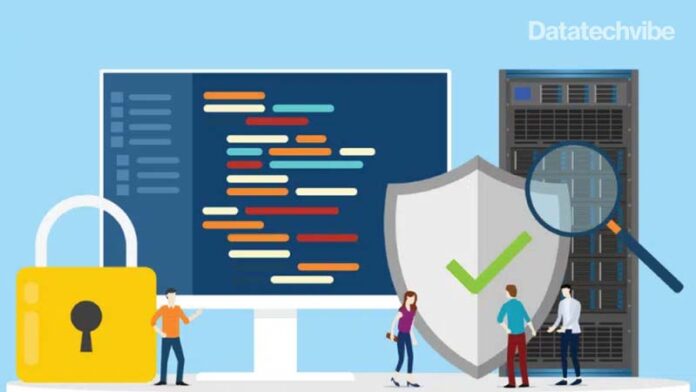Getting started with Zero Trust can be overwhelming, but the underlying benefits are worth it
The concept of Zero Trust is not new, given that the nature of human history has revealed the effect of trust on the development and deterioration of kingdoms and society at large. With ransomware, spear phishing, email compromise, and other cyber attacks at an all-time high, zero trust has become a buzzword in cyberspace.
The pandemic forced organisations to shift from a centralised secured facility to a more decentralised and spread-out working environment. This led to the introduction of unknown networks into the organisation’s system. Zero trust makes more sense now than ever as employees working remotely or in work-from-anywhere environments connect to applications on unknown devices, networks, and connections.
The Security Framework
Zero trust is based on the strategy that the network is secured using the least privileged access controls and stringent user authentication. The framework is not based on the assumption of trust (literally, zero trust), resulting in enhanced network infrastructure, elevated threat protection, and a highly secured user experience. Security enforcement is based on the context of; the device being used, data access requests, and the user’s role.
Total visibility and control over the working environment and user is a prerequisite for adopting a zero-trust architecture. Multi-Factor Authentication (MFA) methods beyond passwords like biometrics with OTPs are employed to ensure selective access. As opposed to legacy systems wherein security was based on the location, zero-trust security posture is based on network separation. The segmented network enables users to keep the data secured anywhere, irrespective of the location; it can be in a secured data centre facility or a distributed multi-cloud environment.
Guide to Adopt Zero Trust Architecture
Evaluating the defence
In a Zero Trust Architecture (ZTA), the defence perimeter is small; thus it’s easier to adopt security guidelines and safeguard it. These perimeters once secured, give total access and control over the assets. You can determine who will access them and when they can be accessed. When implementing ZTA, prioritising critical assets is essential, listing down critical applications in the data centre, and starting from it is preferred.
Usually, when it comes to cybersecurity solutions at large, IT professionals start with the attack surface analysis. But according to the National Institute of Standards and Technology (NIST), understanding the defence mechanism is essential as it’s much smaller when compared to the attack surface and easy to defend. ZTA adoption starts with protecting the most critical asset (data and application), and then the protection surface is expanded towards other assets. Gradually, the complete system is secured, and security goals are achieved.
Magnifying network visibility
A castle can be defended if the enemy can be seen, if the fortification is in the wrong place then defence won’t work. Similarly, while adopting the zero trust framework, understanding the defence surface is pivotal. A data centre is connected to multiple devices and users. This conjunction of connections gets more complicated once the infrastructure converts to hyper-converged infrastructure. Along with the data centre and other peripheral devices, the cloud is also added.
When the organisation includes a multi-cloud strategy in their existing infrastructure, the defence surface is increased, and there are higher chances of network intrusions via security gaps and broken workflows. Having total visibility over the IT infrastructure helps understand the level of protection and security enforcement needed to fortify the system.
Identity discovery and micro-segmentation
The zero trust framework is not based on allowing access as per the IP addresses, its holistic and role-based access controls expand the security identification. So when it comes to giving access zero trust network access goes beyond the IP address validation, and security risks are evaluated based on location, time, role, and device posture.
Micro-segmentation is the bedrock of adopting a zero trust framework; the primary purpose of doing this is to shrink the attack surface to as small as possible. This prevents unauthorised access across the IT environment and restricts lateral movements. Micro-segmentation gives power to cyber professionals to detect, analyse, and prevent cyberattacks before they happen.
Attack surface identification and reduction
Phishing and business email compromise (BEC) was the major source of security breaches during covid. Employees working remotely have highly increased the attack surface as the use of BYOD, unknown networks, and devices escalated rampantly.
Reducing risks in case of a hybrid work environment requires:
- Understanding the digital footprint
- 24*7 communication channel monitoring
- Threat identification and mitigation
Cybersecurity is more of a preventive approach and works toward preventing cyber threats. This works well with legacy systems, but we need a more dynamic approach when it comes to modern and highly digitalised environments. Thus, we are witnessing a paradigm shift towards a more resilient cybersecurity system where the attack is detected early and mitigated before damage is done.
Organisations adopting a zero-trust security framework will be at the forefront of technological advancements as it will offload their time away from security concerns towards the core business outcomes.
If you liked reading this, you might like our other stories
Zero Trust Level
Top Challenges In Adopting In Edge Computing Matters









